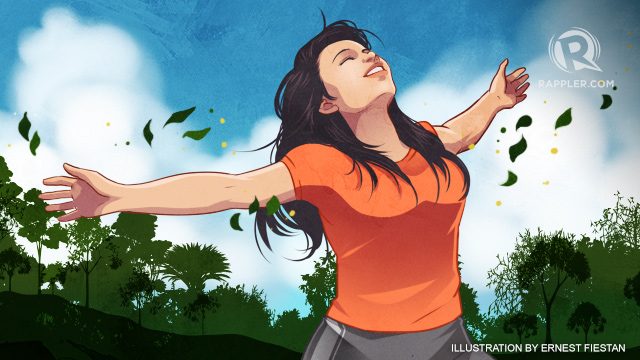SUMMARY
This is AI generated summarization, which may have errors. For context, always refer to the full article.

“The largest hammock in the planet” – this was what the in-flight article said about what you can experience in Masungi Georeserve in Tanay. I could not get the picture out of my head. For me, that giant duyan gives new meaning to “R & R” as it literally and metaphorically bridges “risk” and “rest” – adrenalin and calm – in one shot!
Despite the call of the great indoors because that is where we carry out our “screen lives” with our computers, the lure of the outdoors remains inescapable. Intuitively, we just know that it is “good” for us to be out experiencing the elements. We know that when we go to take a walk among the trees or the desert, or along the beach, dive underwater, observe or be with animals, or float in the sky, there is some kind of “leavening” that you feel inside you – a sort of rising that warmly envelopes you from within. What happens really when you spend time with nature?
Beyond intuition, the positive impact of experiencing nature on human health is now increasingly backed up by scientific studies. The book by Richard Louv entitled Last Child in the Woods: Saving our Children from Nature-Deficit Disorder makes a case for why we should take measures to make sure that children of this “indoor tech” age makes the outdoors an essential part of their lives. The book cites numerous studies, both on children and across age groups, who found that those who live or spend time in nature are able to have less distress from life’s more stressful blows or recover better from ailments.
While stress is good in making us respond to situations with focus, having it overtime could dig deep into our biology and cause diseases. We know now that sustained stress causes inflammation in our bodies which could lead to many things, including cancer. The lower levels in cortisol (marker of stress), blood pressure, pulse rate but higher levels of attention and creativity are findings that recur across many of these studies.
Aside from managing your stress levels through nature experiences, you could, as I mentioned earlier, also possibly help heal some of your ailments, mental and physical. In Louvs’ book, he cited that as far back as 1870 in American hospitals, they were already noticing the positive effects of natural green landscapes on mental patients. Now, the gift of the nature experience to our sanity is seen in studies like this one that showed that where we live could do wonders to our mental health. Today, this insight of how “nature places” directly transform how our bodies react, can be seen in the rise of healing gardens and forest bathing in South Korea and Japan where science has revealed their benefits.
Among those who headlined modern research on this is Roger Ulrich who studied patients recovering from surgery in 2 types of hospital rooms. He found that those who were in rooms that faced trees, recovered better and faster than the ones whose rooms faced a brick wall. Other works prove that having children spend time outdoors improves the attention of children with attention disorders as well as improve the behavior of inner city kids. This is a great insight to how we design our hospitals and other places for healing.
A more recent study even takes this further as it found that those who experience “beautiful” nature are more likely to help others than those who come in contact with “less beautiful nature.” This means that obviously while a pit full of mine tailings or rolling hills or a coastline strewn with plastic bags is also somewhat nature, they do not give you that same effect.
A very inspiring piece in the National Geographic website explores the work and practice of a cognitive psychologist who literally goes out into the wild canyons of Utah to see if he can prove that being outdoors allows your hardworking prefontal cortex (the one that does directed “thinking”) to rest and allow it to do more conceptual thinking and sustain attention. He compares this with those who stay indoors. Now that is my kind of vacation – canyons mixed with electrodes in a skull cap.
In an increasingly urbanizing planet, this is going to be a problem especially when “green” is mostly considered an add-on with the exception of Singapore. Our planners and those who fund them could seriously consider the very significant effect of urban design on our physical and mental health. In the urban workplace, corporate team building activities should not look at nature venues as a mere free day of “excursion” but as way to restore the sanity and creativity of its workers which no amount of urban bravura can do. This is proven and not a mere excuse for a field trip.
We do not come unto the world like we were dropped off from a mystical space ship. We come FROM the world – with genes passed on from our ancestors who inherited them from even more ancient ones. All of them evolved, nurtured by THIS world so it does make sense that our inner architecture looks to that for some healing.
So yes, go “be” with nature as much as you can. You will come back from it a little saner, smarter, and perhaps more patient with your concrete jungle bosses. – Rappler.com
Add a comment
How does this make you feel?
There are no comments yet. Add your comment to start the conversation.